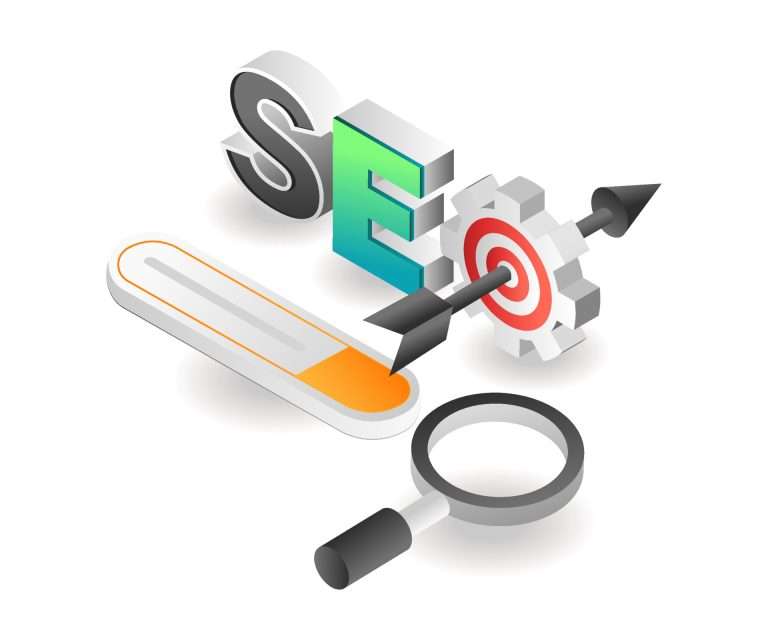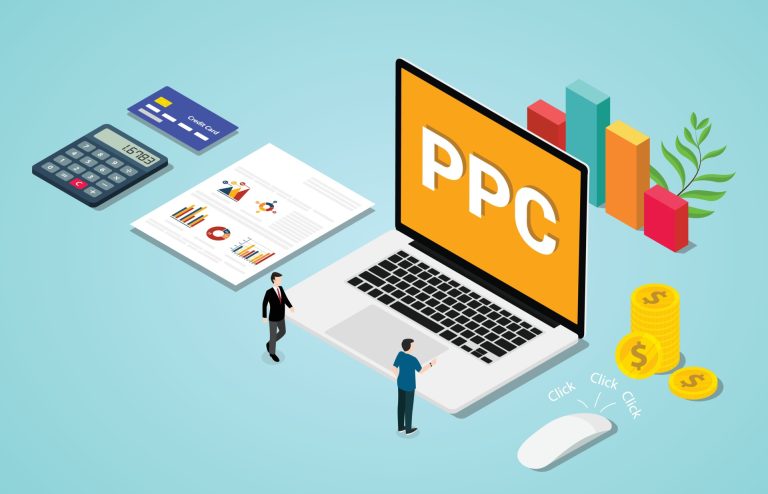About a year ago, I had a conversation with Jade, the owner of a popular ramen joint in town. While the locals loved her delicious bowls of ramen, her online visibility was barely existent. Recognizing the digital shift, Jade felt the urgency to amplify her online game. Like her, many entrepreneurs grapple with the puzzle that is online advertising. Google ads emerged as a beacon in this maze. Grasping the different types of Google ads isn’t merely about strategy; it’s about unlocking a world of potential customers. In this guide, we’ll dive deep into the countless ad types Google showcases, helping you choose the best fit for your venture. So, whether you’re serving the best ramen in town or launching a groundbreaking app, there’s a Google ad just for you.
Search Ads
Imagine you’re craving a bowl of Jade’s signature spicy miso ramen. You pull out your phone, tap into Google, and type “best spicy miso ramen near me.” Right at the top, even before the organic results, you spot Jade’s Ramen Joint. That, right there, is the power of Search Ads.
Search Ads are those text-based advertisements that appear at the top (and sometimes bottom) of Google search results. These ads are highly targeted, meaning they display based on the specific keywords users search for. For business owners, this translates to:
- Direct Visibility: Your ad appears precisely when potential customers are actively searching for your product or service.
- Cost-Effective: You only pay when someone clicks on your ad, known as Pay-Per-Click (PPC).
- High Intent: People searching for specific keywords usually have a higher intent to purchase or inquire.
In essence, Search Ads ensure that you’re not just visible, but visible to the right audience at the right time. For businesses like Jade’s or any other venture striving to gain online traction, it’s a digital tool that’s hard to ignore.
Display Ads
While sipping on your freshly brewed coffee, you scroll through your favorite news site. Amidst articles, a vibrant banner catches your eye: an inviting image of Jade’s newest ramen flavor with a limited-time discount. Tempting, right? That’s a Display Ad at work.
Unlike the text-based Search Ads, Display Ads are graphical. They can pop up as banners, sidebars, or even interstitials on various websites that partner with Google. These visual adverts offer businesses several standout advantages:
- Brand Awareness: With their visual appeal, Display Ads are perfect for introducing your brand or product to potential customers, even if they’re not actively searching for it.
- Retargeting: Ever browsed for a product and then found ads for it everywhere? That’s retargeting. Display Ads can ‘follow’ users, reminding them of their previous interests, and nudging them back to your site.
- Broad Reach: Google’s Display Network is vast, encompassing over two million websites. This means your ad has the potential to be seen by a substantial number of people.
The key to an effective Display Ad? Creativity. A well-designed, visually appealing ad can capture attention, invoke curiosity, and compel users to learn more. For businesses like Bueno Plumbing Joint looking to create a splash and remain top-of-mind, Display Ads are an enticing option.
Video Ads
Imagine lounging on your couch after a long day, browsing through YouTube for some light entertainment. A captivating video starts playing: steam rising from a hot bowl, noodles being lifted with chopsticks, and a satisfied customer slurping Jade’s signature ramen. Before you know it, you’re engrossed. That captivating clip? It’s a Video Ad.
Video Ads are dynamic advertisements that play on platforms like YouTube or within other video content. Here’s why they’re increasingly becoming a favorite among marketers:
- Engagement: In an era of diminishing attention spans, videos can hold viewers’ attention longer than text or images.
- Storytelling: Videos allow businesses to craft a narrative, enabling a deeper emotional connection with potential customers.
- Versatility: From short bumper ads that last a few seconds to longer promotional content, there’s flexibility in how you present your message.
For Jade, a Video Ad might be a behind-the-scenes look into her kitchen, showcasing the care and authentic ingredients that go into each bowl of ramen. For another business, it could be a product demonstration or customer testimonials.
With their immersive nature, Video Ads offer a unique opportunity to not just inform, but to entertain and resonate with audiences. If you’re looking to leave a lasting impression, this is your stage.
Shopping Ads
You’re on a mission: to find the best ceramic ramen bowl to replicate the experience of Jade’s Ramen Joint at home. As you Google it, atop the search results, a carousel of images appears, each showing beautiful bowls with prices and stores where you can purchase them. That right there is the essence of Shopping Ads.
Shopping Ads, also known as Product Listing Ads (PLAs), are visually engaging ads that showcase products directly within Google Search results. Here’s what makes them stand out:
- Visual Appeal: An image is worth a thousand words. Displaying the product visually often leads to a quicker purchasing decision.
- Direct Information: These ads provide essential details like price, brand, and a direct link to purchase – all at a glance.
- High Conversion: Due to their detailed nature, users clicking on Shopping Ads often have a higher purchasing intent.
For a business that sells products – be it ramen bowls, tech gadgets, or fashion items – Shopping Ads can provide direct ROI by driving sales. While they might not be Jade’s primary choice for her ramen restaurant, for an entrepreneur with an e-commerce platform, they’re an indispensable tool in the digital marketing toolkit.
App Ads
Imagine the convenience of ordering Jade’s mouth-watering ramen with just a few taps on your smartphone. A thought crosses your mind, “Does Jade’s Ramen Joint have an app?” While scrolling through a mobile game or a news application, an advertisement for Jade’s official app pops up. Intrigued and enticed, you hit ‘install’. That’s the magic of App Ads.
App Ads are specifically designed to drive app installs and engage users. They appear across Google’s vast network, including Google Search, Play Store, YouTube, and the Google Display Network. Here’s why they’re a hit among app developers and businesses:
- Ubiquity: They automatically reach potential users across all significant platforms.
- Optimization: Google’s machine learning optimizes bids, ads, and audiences to ensure the app reaches the most relevant users.
- Engagement: Beyond just driving installations, App Ads can re-engage users who’ve installed an app but might not be using it actively.
For businesses like Jade’s, which might offer a seamless ordering experience through an app, App Ads can be a game-changer. They not only promote the app but ensure loyal customers stay engaged, driving both digital and foot traffic.
FAQs: Google Ads Explained
Q: What’s the main difference between Search and Display Ads?
A: Search Ads are text-based and appear in Google search results when specific keywords are queried. Display Ads, on the other hand, are visual and show up on various websites within Google’s Display Network.
Q: Are Video Ads exclusive to YouTube?
A: While YouTube is a primary platform for Video Ads, they can also appear across other sites and apps in Google’s Display Network.
Q: How do I determine which ad type is best for my business?
A: It depends on your goals. For brand visibility, Display and Video Ads are great. For driving sales, Shopping Ads might be ideal. If promoting an app, App Ads are your go-to. For specific guidance tailored to your business, consider consulting with a digital marketing agency.
Q: Are Google Ads expensive?
A: Costs vary based on factors like industry, keywords, and competition. With Google’s PPC model, you only pay when someone clicks on your ad. Setting a budget and monitoring performance is key.
Q: Can I target specific audiences with my ads?
A: Absolutely! Google Ads allows for detailed audience targeting based on demographics, interests, behaviors, and more.
Q: How do I track the performance of my ads?
A: Google provides comprehensive analytics through its platform. Additionally, integrating tools like Google Analytics can offer deeper insights into user behavior and ad efficacy.
Conclusion
Google Ads present an unmatched opportunity to propel a business into the limelight. Whether you’re a passionate ramen chef like Jade or an entrepreneur in a completely different sector, understanding the varied types of Google ads can chart the path to reaching your audience effectively. From the immediate visibility of Search Ads to the compelling narratives of Video Ads, there’s a strategy for every business need. As you embark on your digital advertising journey, remember to revisit this guide and consider seeking expert guidance to maximize your returns. After all, in the world of digital marketing, staying ahead of the curve isn’t just an advantage—it’s a necessity.
This blog post is part of our series on digital marketing strategies, designed to help businesses like yours understand the landscape of online marketing. Check out other posts in the series here.
Images courtesy of vecteezy.








